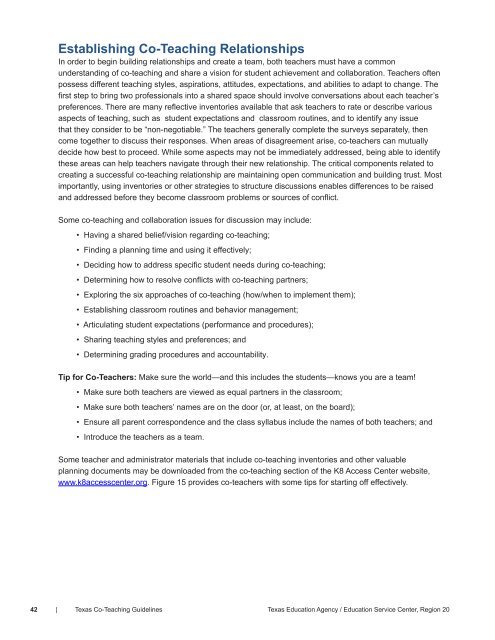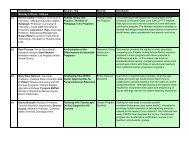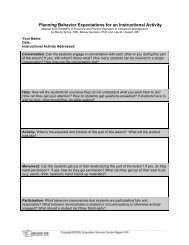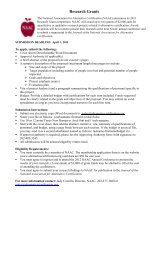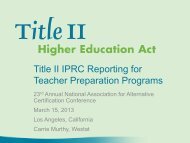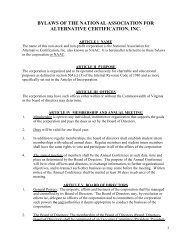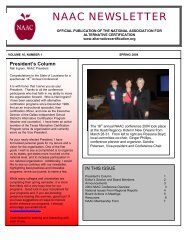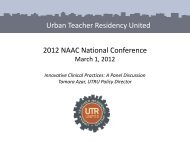Guidelines for Co-Teaching in Texas - Region 17
Guidelines for Co-Teaching in Texas - Region 17
Guidelines for Co-Teaching in Texas - Region 17
You also want an ePaper? Increase the reach of your titles
YUMPU automatically turns print PDFs into web optimized ePapers that Google loves.
Establish<strong>in</strong>g <strong>Co</strong>-<strong>Teach<strong>in</strong>g</strong> Relationships<br />
In order to beg<strong>in</strong> build<strong>in</strong>g relationships and create a team, both teachers must have a common<br />
understand<strong>in</strong>g of co-teach<strong>in</strong>g and share a vision <strong>for</strong> student achievement and collaboration. Teachers often<br />
possess different teach<strong>in</strong>g styles, aspirations, attitudes, expectations, and abilities to adapt to change. The<br />
first step to br<strong>in</strong>g two professionals <strong>in</strong>to a shared space should <strong>in</strong>volve conversations about each teacher’s<br />
preferences. There are many reflective <strong>in</strong>ventories available that ask teachers to rate or describe various<br />
aspects of teach<strong>in</strong>g, such as student expectations and classroom rout<strong>in</strong>es, and to identify any issue<br />
that they consider to be “non-negotiable.” The teachers generally complete the surveys separately, then<br />
come together to discuss their responses. When areas of disagreement arise, co-teachers can mutually<br />
decide how best to proceed. While some aspects may not be immediately addressed, be<strong>in</strong>g able to identify<br />
these areas can help teachers navigate through their new relationship. The critical components related to<br />
creat<strong>in</strong>g a successful co-teach<strong>in</strong>g relationship are ma<strong>in</strong>ta<strong>in</strong><strong>in</strong>g open communication and build<strong>in</strong>g trust. Most<br />
importantly, us<strong>in</strong>g <strong>in</strong>ventories or other strategies to structure discussions enables differences to be raised<br />
and addressed be<strong>for</strong>e they become classroom problems or sources of conflict.<br />
Some co-teach<strong>in</strong>g and collaboration issues <strong>for</strong> discussion may <strong>in</strong>clude:<br />
• Hav<strong>in</strong>g a shared belief/vision regard<strong>in</strong>g co-teach<strong>in</strong>g;<br />
• F<strong>in</strong>d<strong>in</strong>g a plann<strong>in</strong>g time and us<strong>in</strong>g it effectively;<br />
• Decid<strong>in</strong>g how to address specific student needs dur<strong>in</strong>g co-teach<strong>in</strong>g;<br />
• Determ<strong>in</strong><strong>in</strong>g how to resolve conflicts with co-teach<strong>in</strong>g partners;<br />
• Explor<strong>in</strong>g the six approaches of co-teach<strong>in</strong>g (how/when to implement them);<br />
• Establish<strong>in</strong>g classroom rout<strong>in</strong>es and behavior management;<br />
• Articulat<strong>in</strong>g student expectations (per<strong>for</strong>mance and procedures);<br />
• Shar<strong>in</strong>g teach<strong>in</strong>g styles and preferences; and<br />
• Determ<strong>in</strong><strong>in</strong>g grad<strong>in</strong>g procedures and accountability.<br />
Tip <strong>for</strong> <strong>Co</strong>-Teachers: Make sure the world—and this <strong>in</strong>cludes the students—knows you are a team!<br />
• Make sure both teachers are viewed as equal partners <strong>in</strong> the classroom;<br />
• Make sure both teachers’ names are on the door (or, at least, on the board);<br />
• Ensure all parent correspondence and the class syllabus <strong>in</strong>clude the names of both teachers; and<br />
• Introduce the teachers as a team.<br />
Some teacher and adm<strong>in</strong>istrator materials that <strong>in</strong>clude co-teach<strong>in</strong>g <strong>in</strong>ventories and other valuable<br />
plann<strong>in</strong>g documents may be downloaded from the co-teach<strong>in</strong>g section of the K8 Access Center website,<br />
www.k8accesscenter.org. Figure 15 provides co-teachers with some tips <strong>for</strong> start<strong>in</strong>g off effectively.<br />
42 | <strong>Texas</strong> <strong>Co</strong>-<strong>Teach<strong>in</strong>g</strong> <strong>Guidel<strong>in</strong>es</strong> <strong>Texas</strong> Education Agency / Education Service Center, <strong>Region</strong> 20


